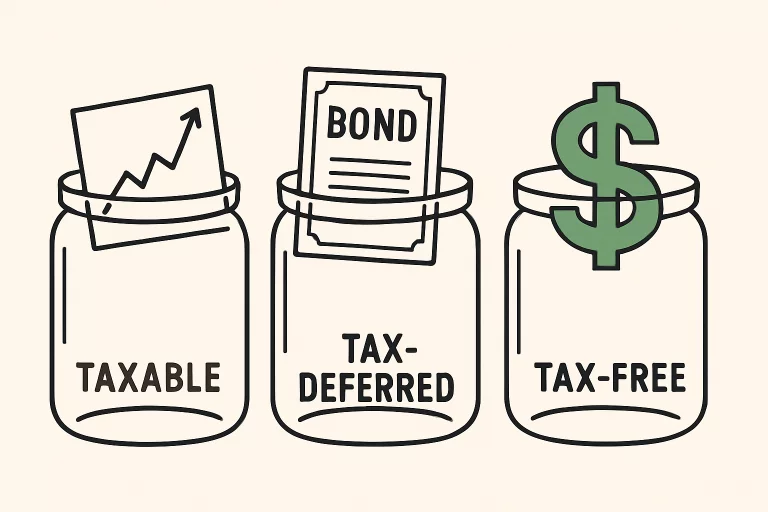Building a robust financial future and achieving long-term financial independence go far beyond diligent saving or selecting a big stock. It fundamentally requires a deep understanding of how taxes impact your investment journey and a commitment to minimizing their cumulative drag on your wealth. Integrating tax-smart investment strategies allows investors to maximize after-tax returns and ensure their portfolios are protected against unnecessary erosion over decades of growth. For individuals with diverse investments or more sophisticated compensation structures—such as those with equity stakes in their company—prioritizing these strategies is indispensable. Proactive tax planning becomes a core pillar of smart wealth accumulation and long-term security.
Tax efficiency in your investment plan can transform your financial future. When you focus on maximizing your after-tax returns, rather than just headline performance, you ensure your efforts today pay off for your goals tomorrow. By keeping your annual tax liabilities low, you boost the power of compounding, letting more of your money work harder for you year after year.
This approach is invaluable for everyone, from busy professionals and high-income earners to those just starting out, who want to make the most of every dollar invested throughout their lives. This includes careful company equity planning, which can significantly impact overall tax efficiency. Below, we’ll break down the most essential tax-smart investment strategies.
Maximize Tax-Advantaged Accounts
Tax-advantaged accounts represent an essential foundation for any long-term wealth-building plan. Regularly contributing to accounts such as 401(k)s, Traditional and Roth IRAs, and Health Savings Accounts (HSAs) delivers the dual benefits of tax reduction and potential tax-free growth. Traditional 401(k)s and IRAs let you lower your taxable income each year by making pre-tax contributions, with taxes deferred until you start withdrawals in retirement, often at a lower marginal tax rate. This deferral alone can result in significant tax savings over many years. In contrast, Roth IRAs and 401(k)s accept after-tax dollars. Still, all future earnings and qualified withdrawals are tax-free, making them especially powerful for young investors or anyone anticipating a higher tax bracket when they eventually withdraw these funds.
Health Savings Accounts (HSAs) offer a unique triple tax benefit: your contributions are tax-deductible, your investments grow tax-free, and you can withdraw funds tax-free for qualified medical expenses. This rare combination makes HSAs the most tax-advantaged vehicle available and extremely valuable for long-term savers. By maxing out contributions to each available tax-advantaged account every year, you can reduce your lifetime tax bill significantly while keeping more of your investment growth compounding for future financial goals.
Implement Asset Location Strategies
Asset location, often overlooked but critically important, involves strategically placing different types of investments in specific account types—taxable, tax-deferred, and tax-free—based on their relative tax efficiency. This approach can dramatically reduce annual taxes and allows your portfolio to grow more efficiently. For example, investments that generate ordinary income subject to higher taxes, such as bonds and real estate investment trusts (REITs), are generally best held inside tax-deferred accounts like traditional IRAs or 401(k)s. This shields the high-tax interest or income from immediate taxation, deferring the tax until withdrawal when your income—and thus your tax rate—may be lower.
Conversely, investments like broad-market index funds or ETFs, which typically distribute low taxable income and qualify for preferential long-term capital gains rates, are ideally suited for taxable brokerage accounts. By matching each asset’s tax characteristics with the most suitable account, you can keep more returns compounding within your portfolio, avoid unnecessary tax payments, and maximize long-term wealth. Reviewing your overall investment holdings with an asset location lens is a smart move for anyone serious about optimizing after-tax returns.

Utilize Tax-Loss Harvesting
Tax-loss harvesting is a significant, tactical, proactive technique to reduce your annual tax bill and enhance the overall efficiency of your portfolio. The strategy involves selling investments trading at a loss, using those realized losses to offset taxable gains elsewhere. This is especially useful in years when you experience significant market volatility or rebalance your portfolio, realizing capital gains. If your losses exceed your gains, you can use up to $3,000 of those excess losses to directly reduce your ordinary income each year directly, carrying forward any remaining amount for future tax years.
However, the IRS wash-sale rule deserves close attention. If you repurchase the same or a “substantially identical” security within 30 days before or after selling it at a loss, you cannot claim that loss for tax purposes. To avoid this, investors often replace a sold stock with a similar—though not identical—investment, maintaining their market exposure while capturing the tax benefit. Leveraging tax-loss harvesting consistently, often with the help of professional advisors or automated platforms, can create a powerful buffer against yearly taxes and compound your savings over time.
Invest in Tax-Efficient Funds
The choice of which funds to invest in can significantly impact your taxes, not just in one year, but compounding over decades. Actively managed mutual funds tend to generate more frequent taxable events due to higher turnover, routinely realizing short-term and long-term gains distributed to investors each year. This can mean bigger annual tax bills and lower after-tax returns. In contrast, index funds and Exchange-Traded Funds (ETFs) are typically built to minimize buying and selling, leading to lower turnover and unrealized gains.
Many ETFs use an “in-kind redemption” structure, significantly reducing the taxable capital gains passed on to shareholders. Additionally, investors can seek out funds that employ explicit tax-management strategies—such as offsetting gains with losses internally and holding positions longer—maximizing their after-tax growth. Prioritizing these tax-efficient vehicles, rather than those that inadvertently increase their annual tax burden, is a smart way to ensure they retain the most significant portion of their returns.
Consider Municipal Bonds
Municipal bonds are a valuable tool for building tax-efficient income, especially for those in higher income brackets. Issued by local and state governments, the interest paid on these bonds is typically exempt from federal income tax and, in many cases, state and local taxes for residents of the issuing state. This tax advantage can make municipal bonds ‘ actual, after-tax yield surpass that of many comparable taxable bonds, particularly for high earners who face steeper tax brackets.
Evaluating the benefits of municipal bonds often involves calculating the tax-equivalent yield, which allows you to compare taxable and tax-exempt investments on equal footing. While munis may sometimes offer lower headline yields than corporate or government bonds, the potential tax savings can make them the more intelligent choice. Reviewing your tax situation to determine where municipal bonds best fit your overall income and investment strategy is crucial.
Plan for Long-Term Capital Gains
The distinction between short-term and long-term capital gains is among the most significant tax benefits available to individual investors. Assets held for more than one year qualify for preferential long-term capital gains tax rates, which are often much lower than ordinary income tax rates or the rates on short-term gains. Adopting a buy-and-hold mindset and systematically timing the sale of appreciated assets to meet this threshold can reduce your tax bill substantially.
Additionally, investors may consider strategies for substantial asset sales, such as spreading out transactions over multiple tax years, donating appreciated assets to charity, or gifting stock to family members in lower tax brackets. These tactics, when executed as part of a broader long-term plan, can further improve tax efficiency. Planning your portfolio withdrawals in retirement when your income may be lower—and being mindful of the sequencing of asset sales—can keep even more growth compounding for your future.
Conclusion
Tax-smart investment strategies form the backbone of lasting financial health. Maximizing and prioritizing tax-advantaged accounts, employing smart asset location, regularly harvesting losses, choosing tax-efficient funds, integrating municipal bonds, intentionally planning for long-term capital gain, and reviewing your portfolio for enduring financial stability and greater after-tax wealth. These strategies are not a one-time set-it-and-forget exercise—they require regular review and adjustment as your life changes, tax laws evolve, and your goals shift. Proactively building a holistic, tax-aware plan today with the guidance of a seasoned advisor or through resources can make all the difference in multiplying your financial success over the decades to come.

